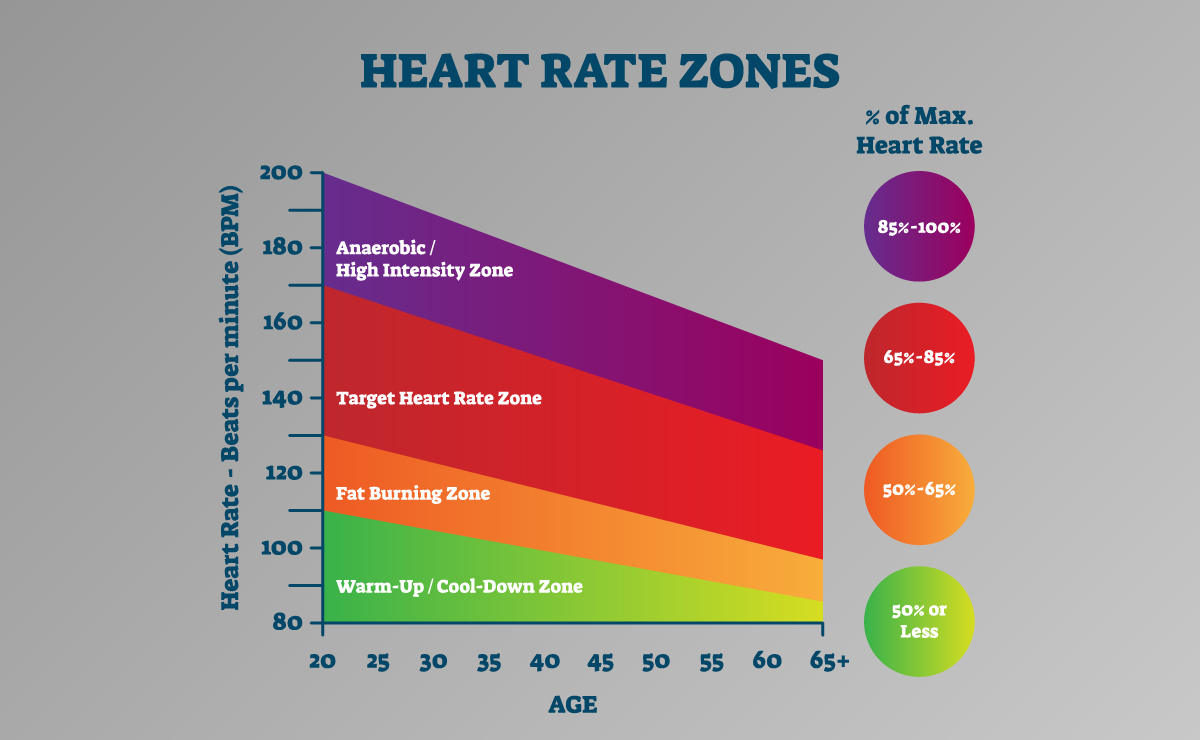Heart Rate Training Zones
Understanding and Utilizing Heart Rate for Effective Training

Heart rate training is a valuable tool for optimizing workouts and achieving specific fitness goals. By training within specific heart rate zones, individuals can tailor their exercise intensity to match their objectives, whether it’s improving endurance, building speed, or maximizing fat burning.
Before jumping into heart rate training, it’s essential to understand some fundamental concepts related to heart rates and how to utilize this data effectively for training purposes.
Key Heart Rate Metrics
Resting Heart Rate (RHR)
Resting heart rate represents the number of times the heart beats per minute during a state of complete rest. It provides valuable insights into an individual’s cardiovascular health and fitness level. In general, lower resting heart rates are associated with better fitness levels.
Recovery Heart Rate
Recovery heart rate is the measurement of how quickly the heart rate returns to its resting rate after intense exercise. Improvements in recovery heart rate can indicate improvements in overall fitness.
Maximum Heart Rate (HR Max)
The maximum heart rate is the highest rate at which an individual’s heart can beat. It is a crucial factor in setting up personalized training programs and is utilized as a reference point for training within specific heart rate zones.
Calculating HR Max
Various methods are used to determine HR Max, including age-based formulas and laboratory stress tests. Additionally, individuals can perform a field HR Max test under the guidance of a healthcare professional. However, it’s important to understand that HR Max can vary based on individual factors that can change and should be periodically rechecked. A simple, albeit rough, calculation for maximum heart rate is 220 – your current age.
Heart Rate Training Zones
Heart rate training zones are specific heart rate ranges corresponding to different exercise intensities. Individuals can effectively manage and monitor their workout intensities by training within these zones to align with their fitness goals. Different training zones engage various physiological aspects, enabling comprehensive improvements in performance.
The American Heart Association recommends a simple two-zone breakdown for beginners:
- Moderate Intensity: 50%-70% of HR Max
- Vigorous Intensity: 70%-85% of HR Max
Transitioning to Multi-Zone Training
As individuals progress in their fitness journey, they may incorporate multi-zone training plans that include varying levels of intensity. These plans usually encompass several distinct heart rate zones, each targeting different performance and fitness aspects.
Examples of multiple heart rate zones for training include:
- Zone 1: Recovery/Easy (55%-65% HR Max)
- Zone 2: Aerobic/Base (65%-75% HR Max)
- Zone 3: Tempo (80%-85% HR Max)
- Zone 4: Lactate Threshold (85%-88% HR Max)
- Zone 5: Anaerobic (90% HR Max and above)
Using heart rate zones and understanding perceived effort can help individuals optimize their training experience, enabling them to focus on the activity rather than constantly monitoring heart rate displays.
Incorporating Target Heart Rate Zones in Training Plans
Effective training plans typically involve allocating varying amounts of time in different heart rate zones, emphasizing lower zones. By strategically structuring workout durations within each zone, individuals can maximize the effectiveness of their training program. For instance, a typical plan might allocate 30%-40% of total workout time to Zone 1, 40%-50% to Zone 2, and progressively smaller percentages to higher intensity zones.
Conclusion
Heart rate training zones offer a structured approach to training that enables individuals to optimize their workouts based on their individual goals and fitness levels. By effectively understanding and utilizing heart rate data, individuals can tailor their exercise intensities to achieve desired outcomes: improved endurance, enhanced speed, or increased fat burning. Incorporating heart rate training into workout regimens can significantly enhance overall performance and fitness.






